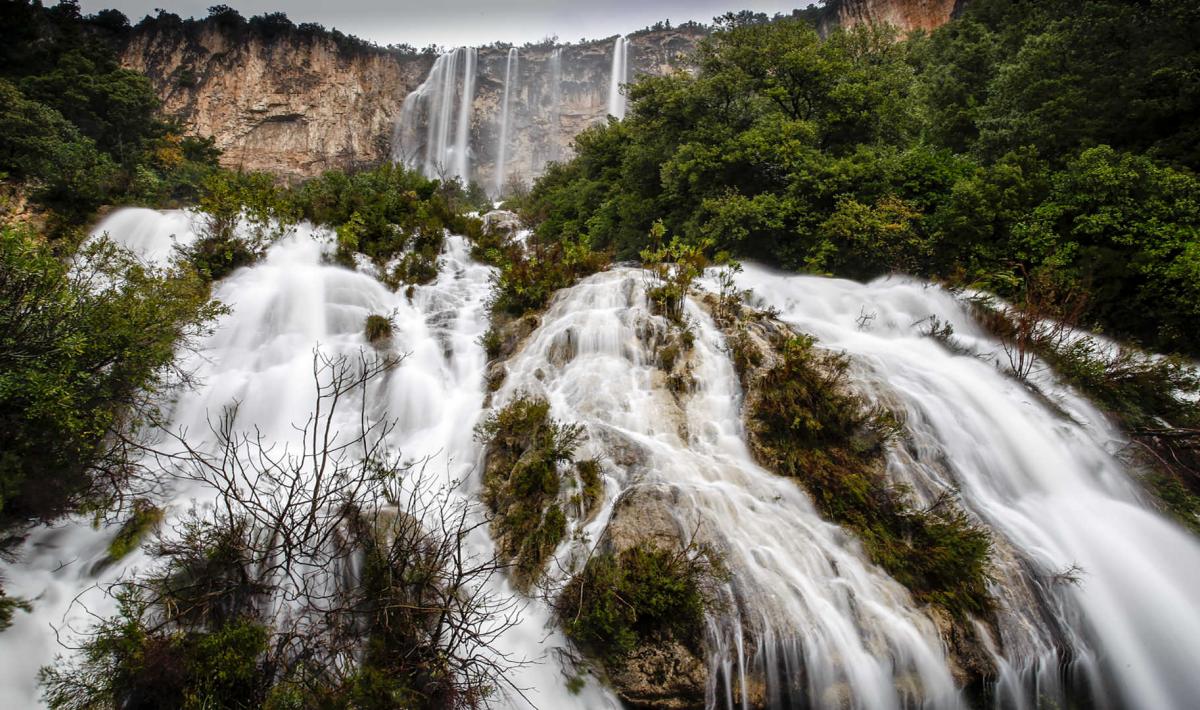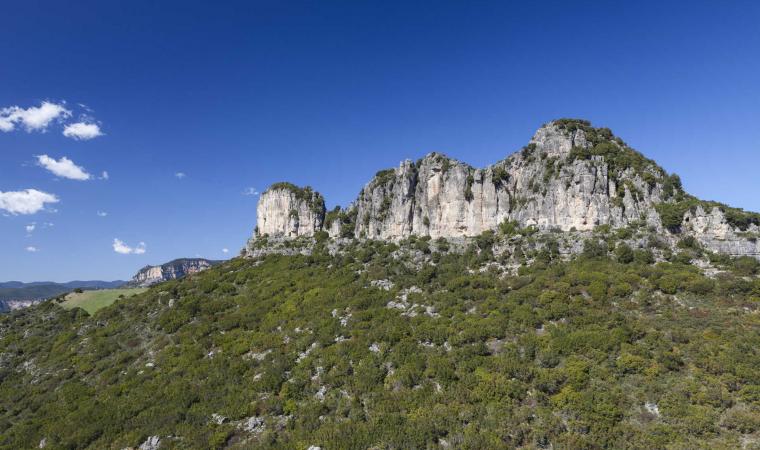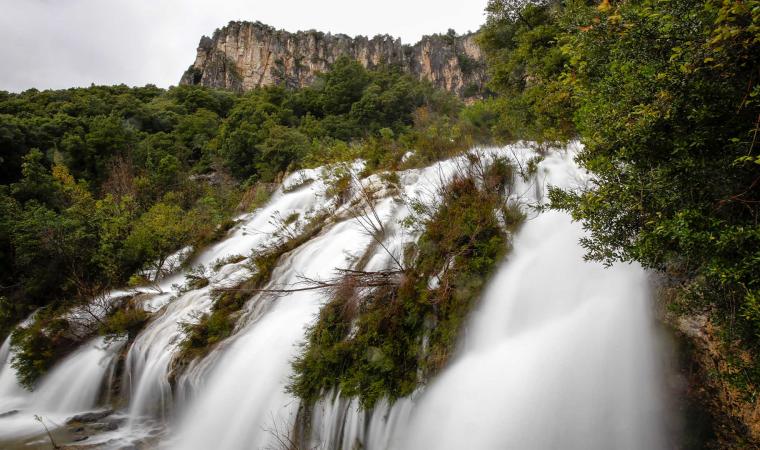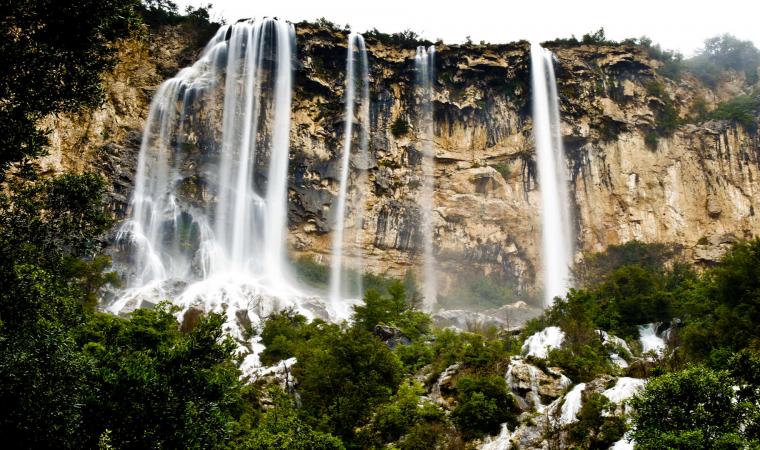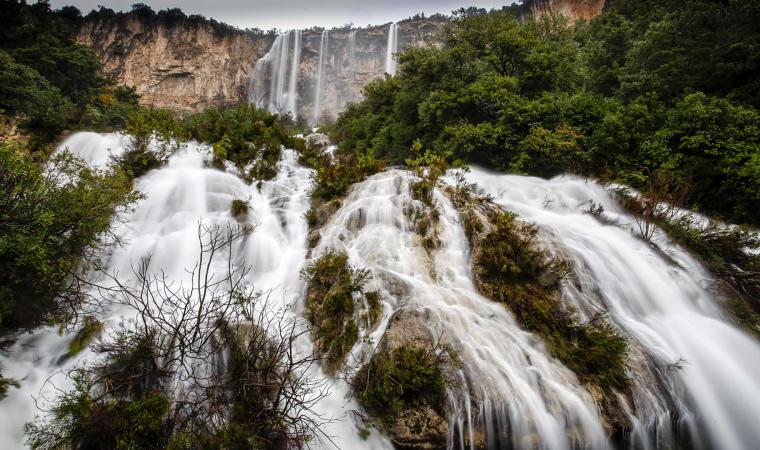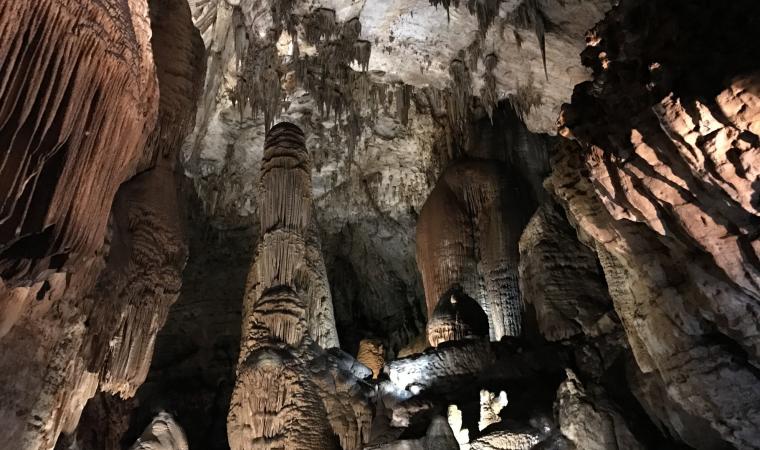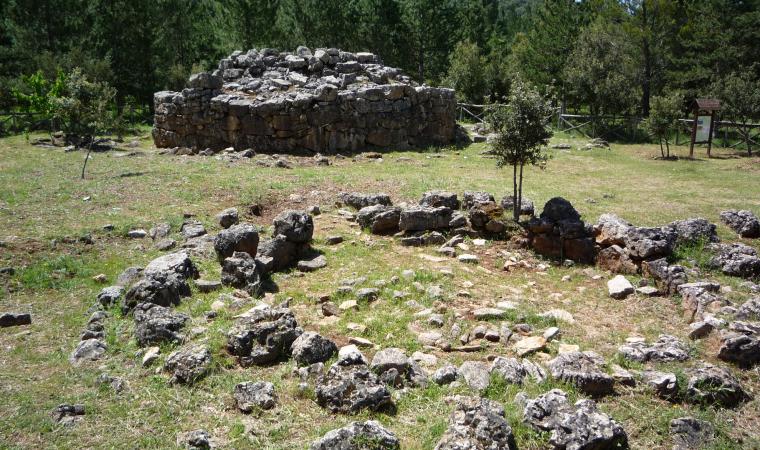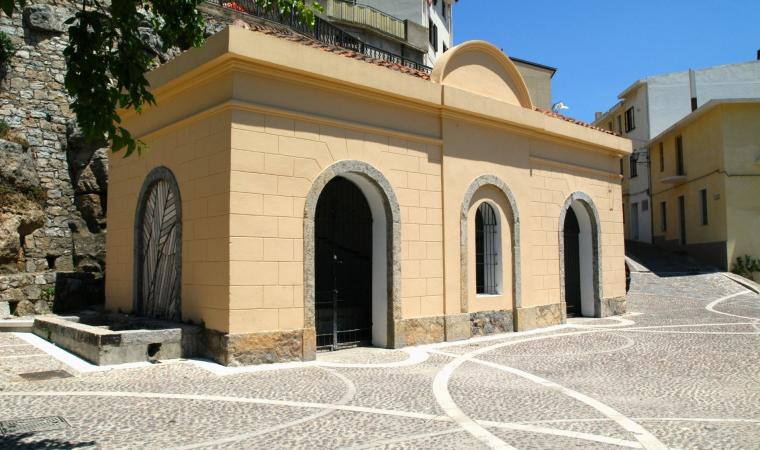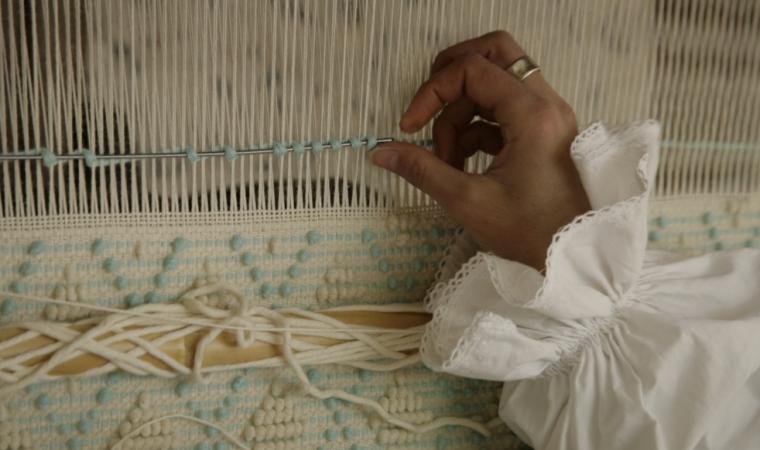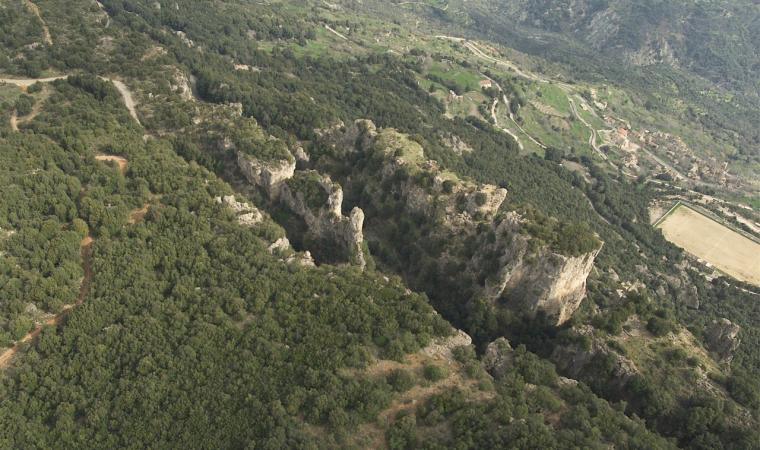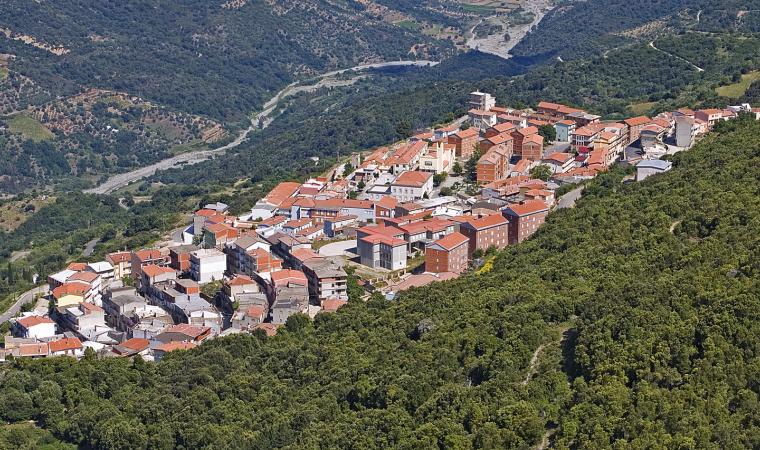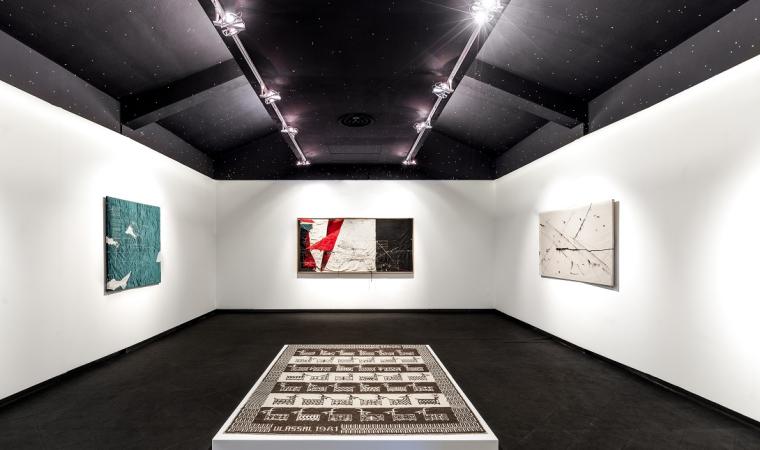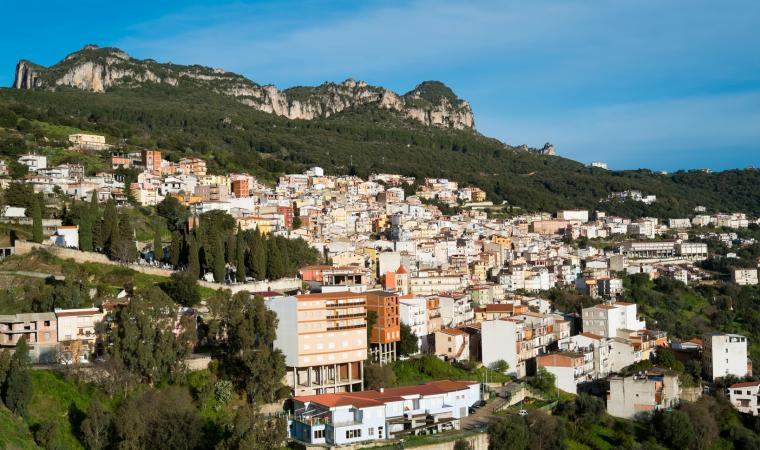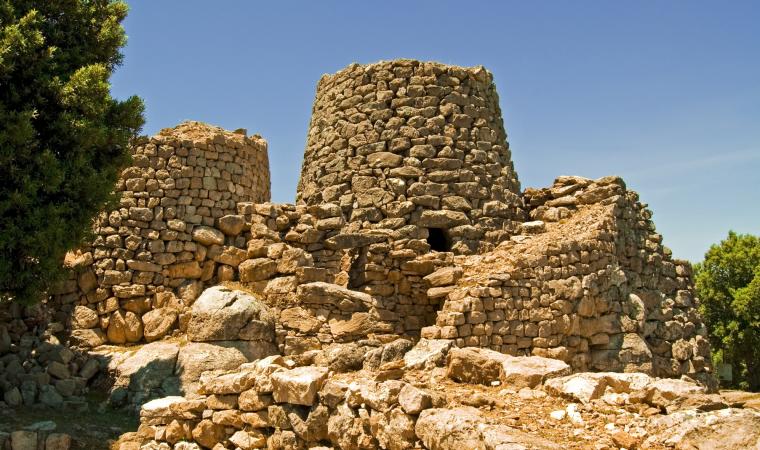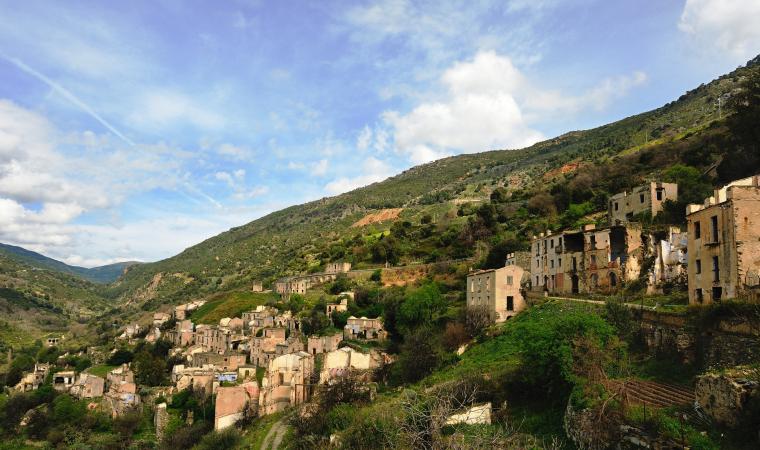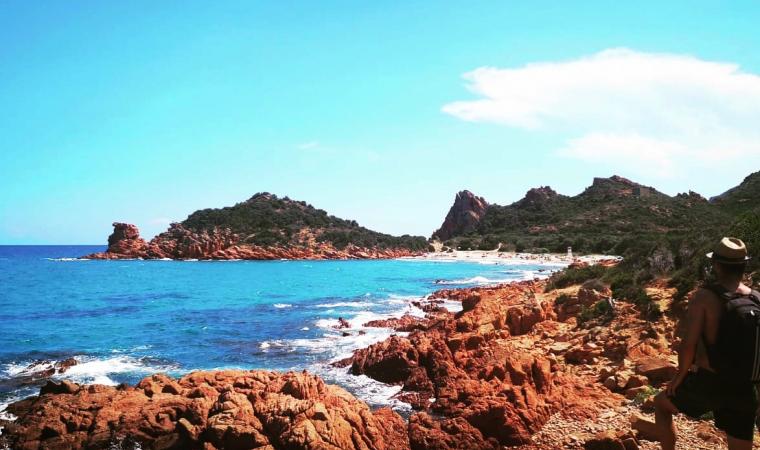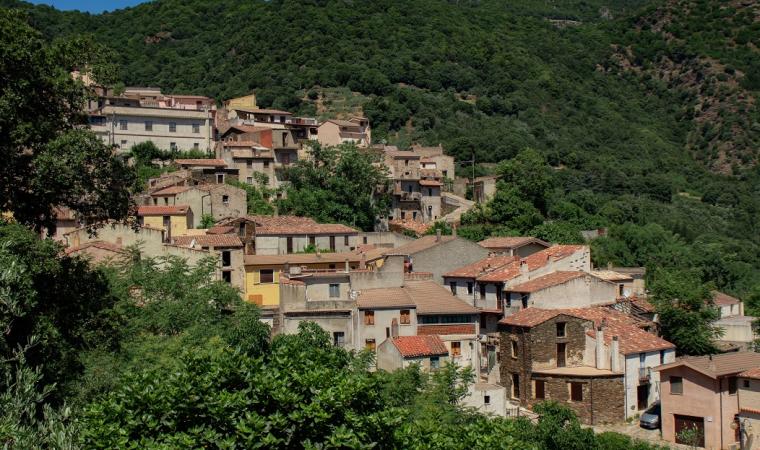Smooth, vertical walls, covered by holm oaks and filled with Mediterranean fragrances, rise to reach heights of a thousand metres. The Buttes or 'Tacchi' (literally meaning Heels) owe their name to their pointed shape, like the heel of a shoe and characterize the inland landscape of Ogliastra, particularly that of Ulassai. It is a territory rich in underground waters: from the limestone elevations with gushing springs and streams that, during periods of floods, are the origin of evocative waterfalls. Those of Lecorci, half a kilometre from the inhabited area, emerge at the foot of ataccu, not far beneath the cave of su Marmuri, the largest on the Island. The path of the waters continues on downstream until it reaches, after three kilometres, the waters of Lequarci, the other waterfalls of Ulassai, the most impressive in Sardinia.
The waters of the river of the same name, coming from the plateau of Baulassa and Martalaussai, descend down various rivulets from a limestone amphitheatre-style cliff, making a jump of nearly a hundred metres, with a width that reaches 70 metres. Then, they flow, gushing, for another height difference of 75 metres before spilling out into a myriad of little lakes. They are seven kilometres from the village, in the locality of Santa Barbara, where a there is a monumental forest. In the vicinity, you can also visit a church that has Byzantine-Romanesque architecture.
On your nature itinerary, a green canyon awaits you and is several tens of kilometres long, accompanied by the flowing water. You can go up the Rio Lequarci rivulet, to reach the top of the waterfall, surrounded by lush vegetation. Otherwise, there are dozens of other trails that you can take, between the karst rocks. Ulassai, located at a height of over 700 metres, is surrounded by a dolomitic landscape and it is a haven for trekkers and free climbers: thanks to 200 roads that have been marked out and are piton-equipped. The caves are one of its distinctive features: as well as the famous Su Marmuri - nearly a kilometre long - don't miss those of Is Lianas. All around, you will find endless signs of the prehistoric era: the megalithic village of Seddorrulu (3rd millennium BC) and numerous nuraghi, among which Trucculu, Ibbe de su Accili and Pranu (2nd-1st millennium BC) that are perfectly preserved. The village of Ulassai is a treasure chest of culture and traditions and was the birthplace of the 20th century artist Maria Lai: just outside the village, there is the Stazione dell'Arte museum, honouring her multi-faceted genius.

